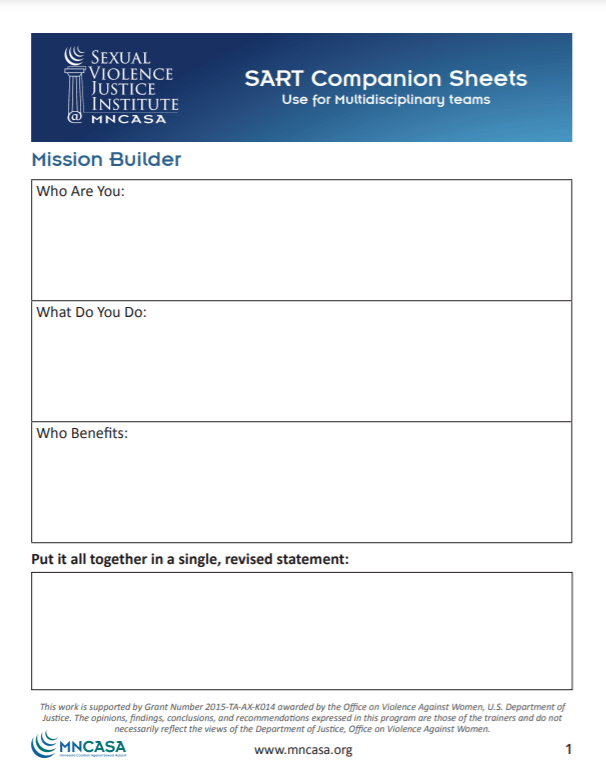SVJI Resource: Mission Builder
Fatima Jayoma | Rural Projects Coordinator at SVJI @MNCASA
Happy Wednesday! Recently at SVJI, we have been chatting with new SARTs. A topic that’s come up is mission statements. This week, we will go over our Mission Builder resource.
Developing a mission statement allows SART members to ensure that they are on the same page about the team’s work. Additionally, the mission statement will tell others the most essential information about the SART.
A mission statement should contain the following information:
- Who are you?
- What do you do?
- Who benefits?
Our SART Starter Kit Resource goes through how your team can answer the three questions:
- Who are you?
- This is the easiest part of the mission statement. It is the name of the group or team and should probably describe the service area (for example, the “_____________ County Sexual Assault Response Team).
- What do you do?
- Focus in on the big picture view of the team’s work. Try to concisely articulate the end goal the team is trying to achieve (for example, “increases access to specialized services and support, and improves the multidisciplinary response”).
- Who benefits?
- Knowing the people you aim to serve will help keep the team centered. You will have the power to ask, “For whom do we do this work?” Keep this part focused on the main population (for example, “victims of sexual assault).
Putting the above examples together, a mission statement might read like this: “The __________ County Sexual Assault Response Team increases access to specialized services and support and improves the multidisciplinary response for victims of sexual assault.”

To help get your team started, you can download this worksheet. If your team already has a mission, it is worth revisiting it to ensure that it is still relevant and meaningful. A mission statement can change over time.
If you have questions or need training/technical assistance around mission development, please reach out to us at [email protected].
